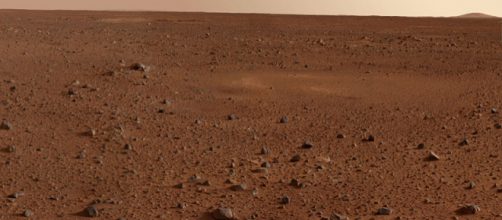NASA’s ground control is worried because a severe storm on Mars has cut off all contact with its Opportunity rover that has been there for 14 years. The dust storm led to darkness and disturbed the onboard solar generators. This means that the solar panels are unable to tap solar energy.
According to LA Times, officials in the space agency have no idea how long the rover will remain silent and whether it can return to its earlier form. In their opinion, Opportunity has probably gone into sleep mode. John Callas, the project manager at the Jet Propulsion Laboratory, has indicated that ground teams are very aware of the problem and are monitoring the situation 24/7 to track down any signal.
Mars is important for NASA
The problems with Opportunity rover began at the start of June when fears of the storm becoming a problem arose. As the days passed, the rover’s solar panels were affected. There was a drop in the solar energy generated and by June 6, it had to be put into a temporary power-saving mode. Officials are hopeful that once the storm clears, there will be enough sunlight to bring the panels back to working condition.
Opportunity has actually outlived its life. When launched, it was supposed to be a 90-day mission but it has gone on for more than 14 years. The storm has already covered nearly a quarter of the planet’s surface and could continue for some time.
NASA can fine-tune future activities
Scientists at NASA are concentrating on a mission to Mars and the sudden storm will force them to consider strategies to handle situations where generating solar energy might be problematic. According to The Guardian, it is difficult to predict when the sky will clear and when there will be adequate sunlight to recharge Opportunity’s batteries. Efforts to contact the rover have failed and the storm is keeping the ground control on edge.
NASA launched two rovers, Opportunity and Spirit, in 2003 and they landed on the red planet in 2004. Their mission was to study Martian rocks and soil. Spirit failed but Opportunity kept working and its fate now hangs in the balance.
Of course, it had weathered an earlier storm in 2007 that lasted for a few days and got back into action once the storm died down.
Curiosity rover is also on Mars. It has been there for more than five years, is nuclear-powered and is located on the on the far side of Mars. The storm has already covered nearly a quarter of the planet and could spread to that region as well. If it does, it is to be interesting to see if Curiosity will rise to the challenge.


